Digital Poster
Generating Synthetic Imaging Data: Part I
ISMRM & ISMRT Annual Meeting & Exhibition • 10-15 May 2025 • Honolulu, Hawai'i

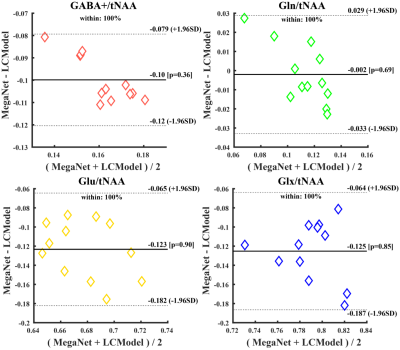 |
Computer Number: 33
3216. MegaNet:
Physical Intelligent Metabolite Quantification from Edited
Magnetic Resonance Spectra with Synthetic Data Learning
J. Zhang, Z. Tu, Y. Li, N. Gao, X. Jiang, Q. Xu, X. Song, D.
Guo, X. Qu
Xiamen University, Xiamen, China
Impact: It
shows that synthetic data learning with physical prior
knowledge is probably a reliable method to address the
problem that AI training of magnetic resonance spectroscopy
(MRS) lacks abundant high-quality data.
|
|
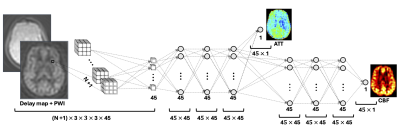 |
Computer Number: 34
3217. Cerebrovascular
Reactivity Measurements using Simultaneous 15O-Water PET and
Deep-Learning Synthesized Multi-PLD PCASL
B. Ho, D. Kim, A. Kumar, M. Zhao, A. Fan, Y. Jung, G.
Zaharchuk
Stanford University, Stanford, United States
Impact: Though single-PLD ASL offers shorter scan
durations, it largely underestimates CVR. Using deep
learning models to synthesize multi-PLD ASL even from a
single PLD may allow for more robust CVR estimates while
potentially matching the shorter scan times.
|
|
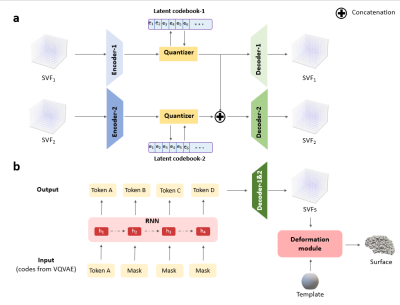 |
Computer Number: 35
3218. A
Generative Model of Cortical Surfaces
C. Tsai, J. Zhao, G. Lin, S. Ahmad, P-T Yap
University of North Carolina at Chapel Hill, Chapel Hill, United States
Impact: This cortical surface generative model can
produce a large number of cortical surfaces for training
deep learning models and conducting neuroimaging studies.
|
|
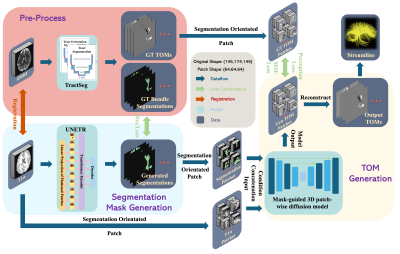 |
Computer Number: 36
3219. Tractography
from T1-Weighted MRI Using Segmentation-Guided and Patch-Based
Diffusion Model
D. Sheng, J. Wang, G. Xie, L. J O’Donnell, L. Zhang, F.
Zhang
University of Electronic Science and Technology of China, Chengdu, China
Impact: This study introduces a novel approach for
generating tractography directly from T1-weighted MRI
rapidly and accurately. This can be a useful tool to
facilitate large-scale brain connectivity studies without
the resource constraints associated with dMRI.
|
|
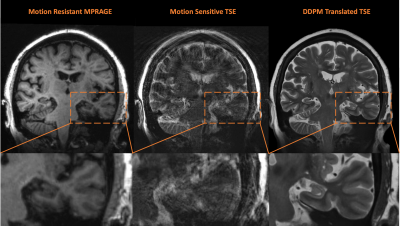 |
Computer Number: 37
3220. High
Resolution TSE Image Synthesis Using Denoising Diffusion Models
Trained on 7T Image Pairs: Application for Hippocampal Subfield
Analysis
J. Li, A. Sajewski, T. Santini, T. Ibrahim
University of Pittsburgh, Pittsburgh, United States
Impact: This work introduces an alternative solution for
salvaging motion-corrupted TSE images, potentially reducing
patient exclusion rates and improving the statistical power
of neuroimaging studies through diffusion model based image
translation.
|
|
 |
Computer Number: 38
3221. Cross-Contrast
Enhancement of Brain Tumor Datasets using Deep Learning
R. Griffin, M. Murphy, H. Neeli, E. Leiss, A. Webb, D.
Martin, N. Tsekos, P. Martin
University of Houston, Houston, United States
Impact: Leveraging complementary information from
another contrast helps overcome the image fidelity lost at
higher acceleration factors, allowing for faster
diagnostically useful scanning. We extend the analysis of
multi-contrast MRI enhancement to patients with tumors,
increasing clinical relevance of results.
|
|
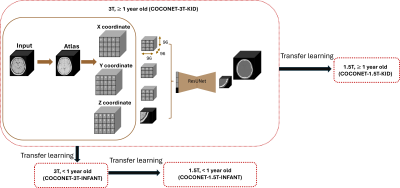 |
Computer Number: 39
3222. COCONET:
A Coordinate-Convolutional patch-based ResUnet for MR Pediatric
Image Synthesis
T. Wang, Y. Chen, P. Commean, C. Eldeniz, C. Merrill, G.
Skolnick, K. Patel, H. An
Washington University in St. Louis, St. Louis, United States
Impact: This study provides high-resolution pCT images
from pediatric MRI imaging. It provides an alternative
pediatric cranial bone imaging method free from ionizing
radiation.
|
|
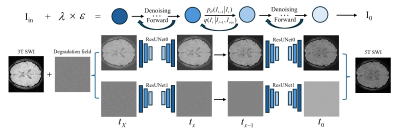 |
Computer Number: 40
3223. An
Adaptive Dual Degradation Diffusion Model for Controllable 5T
SWI Synthesis from 3T MRI
Y. An, C. Liu, W. Zhao, Y. Dong, Y. Jiang, X. Song, D.
Liang, H. Zheng, Z. Hu
Shenzhen Institute of Advanced Technology, Chinese Academy of Sciences, Shenzhen, China
Impact: The method has shown effectiveness in enhancing
SWI images, providing detailed results for brain microbleed
evaluation and neurological assessments. These findings
indicate that the proposed model has significant potential
for advancing clinical applications in brain-related
research.
|
|
 |
Computer Number: 41
3224. Synthesis
of Three-dimensional (3D) Multi-contrast Brain Tumor Images with
Controlled Tumor Properties Using Generative Models
K. Aki, Y. Takeishi, Y. Jitsumatsu, S. Kuhara, J. Takeuchi,
H. Takeshima
Kyushu University, Fukuoka, Japan
Impact: From non-tumor MR images, images with tumors at
controlled locations can be generated using 3D ellipsoids as
desirable regions of the tumors. Potential applications
include training of machine learning models.
|
|
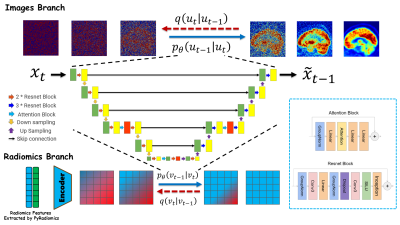 |
Computer Number: 42
3225. Dual-Branch
Score-Based Diffusion Model Incorporating Radiomics Into
Synthesizing PET From MR Images
B. Zhang, T. Xie, Z. Cui, X. Dong, J. Lyu, S. Zhang, H. Li,
H. Wang, D. Liang, Y. Zhou
Shenzhen Institute of Advanced Technology, Shenzhen, China
Impact: The proposed method integrates radiomics into
the synthesis process, enhancing the clinical utility of
MRI-based PET alternatives by producing reliable,
radiation-free PET-like images with improved diagnostic
fidelity and accessibility.
|
|
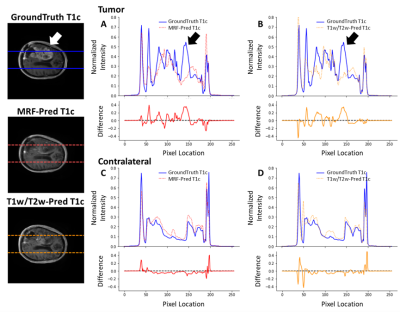 |
Computer Number: 43
3226. Magnetic
Resonance Fingerprinting (MRF)-based Virtual Contrast-enhanced
MRI Synthesis using Deep Transfer Learning
Y. Ni, J. Lai, C. Liu, W. Li, X. Wang, P. Wang, G. Ren, J.
Cai, T. Li
The Hong Kong Polytechnic University, Hong Kong, Hong Kong
Impact: MRF-based VCE-MRI has the potential to enhance
patient safety and streamline clinical workflows by
eliminating the need for contrast agents. Offering
comparable synthetic accuracy to conventional T1w/T2w-based
models, the MRF-based approach features a more efficient
single-sequence acquisition.
|
|
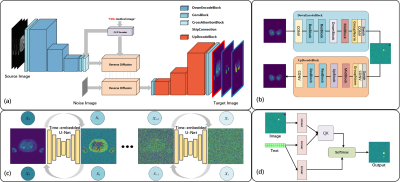 |
Computer Number: 44
3227. Cross-Modal
Text Prompts Specified MRI-to-PET Dynamic Image Translation
Y. Jiang, Y. Jin, H. Liu, Y. An, N. Zhang, H. Zheng, D.
Liang, J. Liu, R. Chen, Z. Hu
Shenzhen Institute of Advanced Technology, Chinese Academy of Sciences, Shenzhen, China
Impact: This approach offers a safer imaging alternative
by generating synthesis PET images without radioactive
tracers, supporting disease diagnosis and monitoring with
reduced patient risk. This development could broaden MRI’s
clinical application, fostering multi-tracer insights in
resource-limited settings.
|
|
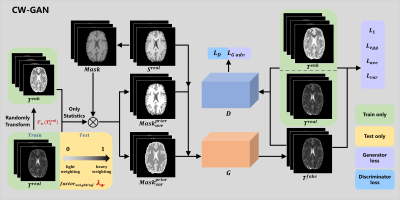 |
Computer Number: 45
3228. CW-GAN:
Controllable-Weighting Generative Adversarial Networks for
Cross-Domain Multi-Contrast MR Image Synthesis
H. Zheng, Z. Wu, G. Wang, C. Cai, S. Cai, Z. Chen
Xiamen University, Xiamen, China
Impact: CW-GAN
provides a powerful tool for MRI image synthesis with
controlled weighting, outperforming existing methods in
generalization and controllability, offering valuable
potential for clinical applications and advancing MRI deep
learning-based tasks.
|
|
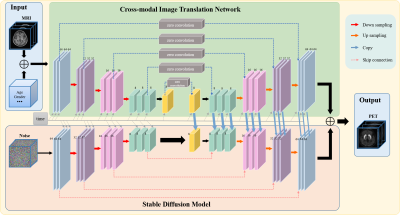 |
Computer Number: 46
3229. MRI-Driven
Diffusion Model of 18F-FP-CIT PET Image Synthesis for
Parkinson's Disease
C. Liu, Y. Jin, H. Liu, J. Han, F. Fu, B. Li, N. Zhang, H.
Zheng, D. Liang, Z. Hu
Research Center for Medical AI, Shenzhen Institute of Advanced Technology, Chinese Academy of Sciences, Shenzhen, China
Impact: This
development is valuable for the diagnosis of PD in patients,
offering a potential tool to enhance diagnostic
capabilities.
|
|
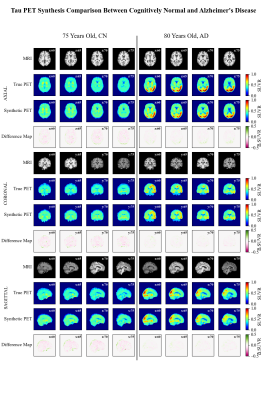 |
Computer Number: 47
3230. AV1451
Tau PET Synthesis from T1-weighted MR Images with U-NET
F. Vega Lara, M. MacDonald
University Medical Center Groningen, Groningen, Netherlands
Impact: Our model proves the feasibility of synthesizing
AV-1451 PET images from T1-weighted MRI, an approach that
could enhance the accessibility for large cohort-studies and
early dementia detection, while also reducing costs,
invasiveness, and enhancing patient safety by limiting
radiation exposure.
|
|
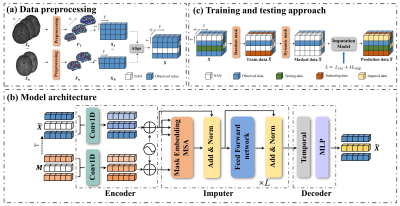 |
Computer Number: 48
3231. Imputing
Longitudinal Infant Brain MRI Features Using a Self-Supervised
Transformer Model
C. Ning, R. Zhao, Y. Chen, H. Xu, M. Li, T. Zheng, X. Xu, R.
Chen, Y. Zhang, L. Zhao, D. Wu
Key Laboratory for Biomedical Engineering of Ministry of Education, Department of Biomedical Engineering, College of Biomedical Engineering & Instrument Science, Zhejiang University, Hangzhou, China
Impact: The proposed model is able to impute the missing
data in longitudinal studies of infants, which may enrich
the information along development trajectory and downstream
analyses.
|
The International Society for Magnetic Resonance in Medicine is accredited by the Accreditation Council for Continuing Medical Education to provide continuing medical education for physicians.